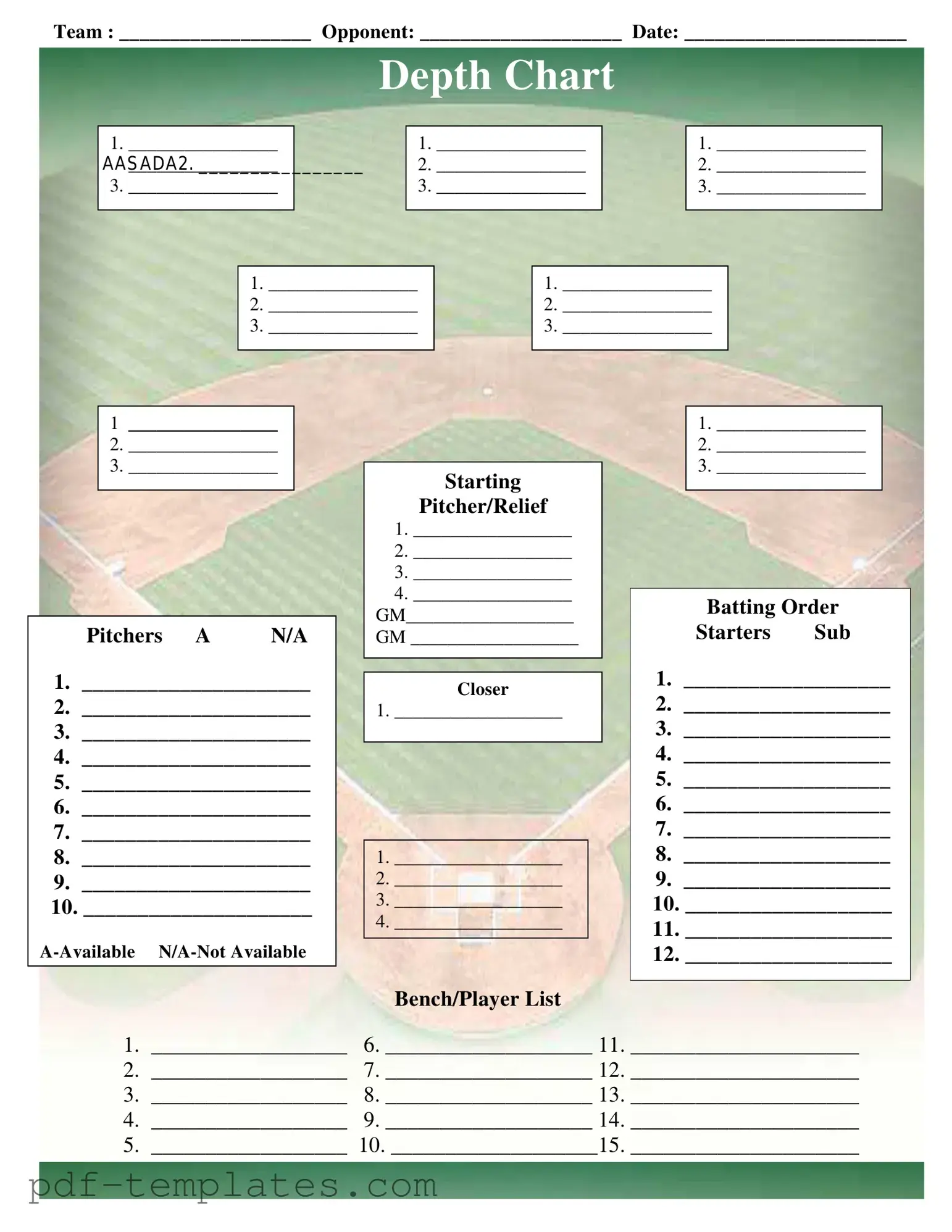The Baseball Field Lineup form shares similarities with the Player Roster form commonly used in various sports. Both documents serve as essential tools for coaches and managers to outline the players available for a game. The Player Roster typically includes sections for player names, positions, and availability, much like the Baseball Field Lineup form. This allows teams to quickly reference who is on the field and who is available to substitute, ensuring that strategic decisions can be made efficiently during the game.
Another document that parallels the Baseball Field Lineup form is the Game Day Checklist. This checklist helps teams prepare for the day of the game by listing all necessary items and tasks. Much like the lineup form, it emphasizes organization and preparation, ensuring that everything from uniforms to equipment is accounted for. By using both documents, teams can streamline their operations and enhance their readiness, leading to improved performance on the field.
The Pitching Rotation Schedule is yet another document that bears resemblance to the Baseball Field Lineup form. This schedule outlines the pitchers slated to play during a series of games, detailing their expected roles and matchups. Similar to how the lineup form organizes players by position and availability, the pitching schedule provides clarity on who will take the mound and when. This helps coaches make informed decisions about pitching strategies and player management throughout the season.
Understanding the importance of documentation in sports, the CA DMV SR1 form is a mandatory report for traffic accidents occurring in California, as required by the state's Department of Motor Vehicles (DMV). It serves to document the specifics of an accident involving personal injury, death, or property damage exceeding $1,000. Completing and submitting this form within the stipulated timeline is crucial to avoid potential suspension of driving privileges, much like keeping track of All California Forms to ensure compliance and organization in various legal matters.
Lastly, the Scouting Report is a crucial document that complements the Baseball Field Lineup form. Scouting reports contain detailed information about opposing teams and players, including strengths, weaknesses, and strategies. While the lineup form focuses on the players available for a specific game, the scouting report provides context on how those players might perform against their opponents. Together, these documents equip coaches with the insights needed to devise effective game plans and maximize their team’s chances of success.
